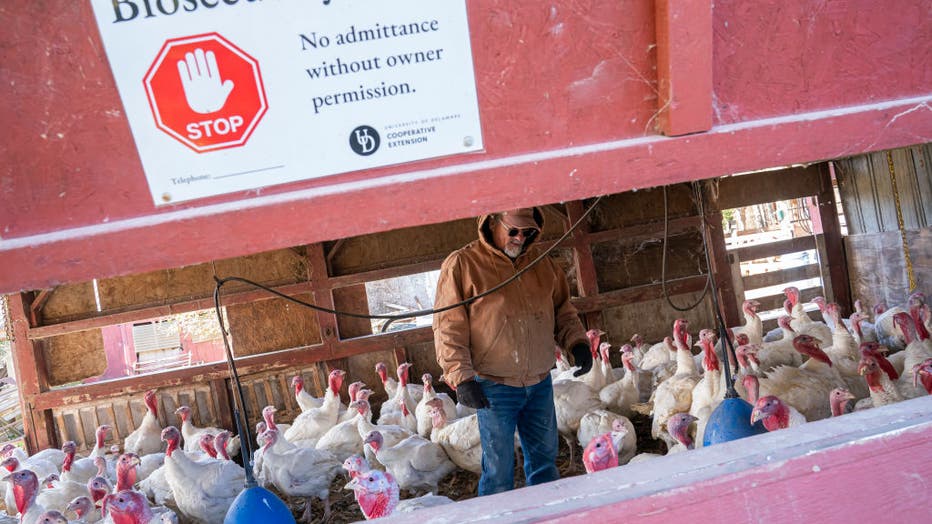Bird flu infects more farmworkers than previously known, CDC says
LOS ANGELES - In a significant move, the Centers for Disease Control and Prevention (CDC) has issued new guidelines urging farms to test workers exposed to bird flu, even if they show no symptoms.
This comes after a CDC study found antibodies in several dairy workers, signaling possible bird flu infection among asymptomatic individuals. The guidance, aimed at minimizing virus spread among livestock workers, underscores the need for closer monitoring and prevention.
Cdc expands bird flu testing for farmworkers
Federal health officials are recommending increased bird flu testing for farmworkers, even those without symptoms, following a study showing that dairy workers may be at risk for infection.
The CDC’s guidance comes after blood tests indicated that 8 out of 115 workers surveyed in Michigan and Colorado had antibodies to the H5N1 bird flu virus. Dr. Nirav Shah, principal director of the CDC, emphasized that these actions are designed to protect farmworkers and prevent the virus from mutating as it spreads.
Study highlights spread potential in farm settings
The CDC’s recent study, which focused on workers in close contact with infected animals, represents the largest assessment of bird flu exposure in the U.S. since the virus was first detected in dairy cattle earlier this year.

Bill Powers checks on his flock of white turkeys, which have been kept under shelter all year to prevent exposure to avian influenza, at his familys farm on November 14, 2022 in Townsend, Delaware.
Notably, four out of the eight workers with antibodies had no symptoms, suggesting that the virus may spread among farmworkers without causing obvious signs of illness. Experts say this finding has prompted the CDC to update its guidelines.
"In the past, we’ve recommended testing only for symptomatic workers," said Dr. Gregory Gray, an infectious disease researcher, in a report by the Associated Press. "This updated guidance reflects a growing assessment of the risk posed by H5N1."
High-risk factors on farms
The study found that farmworkers’ duties—often involving the handling of milk or cleaning milking parlors—are likely to increase their exposure to bird flu.
None of the eight workers with antibodies wore respiratory protection, and only a few used eye protection, raising concerns about adequate safety measures.
Researchers also noted that infected cows often have high levels of the virus in their milk, a significant factor for infection risk.
Virus spread concerns
Experts warn that each new infection, whether in animals or humans, raises the risk of the virus adapting in ways that could heighten its danger. Angela Rasmussen, a virologist at the University of Saskatchewan, emphasized that the current response to H5N1 might be inadequate given the virus’s ability to jump between species.
"If this virus continues spreading across different species, there’s a risk we might see it mutate in ways that could pose even greater risks to humans," she said.
Barriers to effective monitoring
While the CDC’s new guidance calls for expanded testing, researchers highlighted challenges in implementing it effectively, particularly due to resistance from farm owners and workers.
Some farm owners have been reluctant to allow testing, and many workers may not seek testing unless symptoms arise. This reluctance, along with logistical barriers, has slowed efforts to contain the virus on farms.
Outbreak expands across livestock
Since the initial detection of H5N1 in dairy cows, the virus has spread to 446 cattle herds across 15 states. Recently, the U.S. Department of Agriculture confirmed bird flu in a pig on an Oregon farm, marking the first detection in swine in the U.S.
This expansion into new livestock populations underscores the urgency of CDC’s updated recommendations and the importance of proactive testing and preventative measures in high-risk environments.

